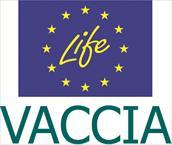
This action will focus on the Pallas-Yllästunturi national park and the adjacent forest region, located in northern Finland north of the Arctic Circle. Climate change in the Arctic areas can result in large changes in levels and loads of atmospheric pollutants for example due to changes in circulation pat-terns, increased marine transport, increased amount of forest fires and land-use changes. These changes will be assessed in this action using information of the Pallas-Sodankylä Observatory and different modelling techniques. The site is particularly suitable for long-term ecological and atmospheric monitoring because the Pallas area has been a national park over six decades and thus represents a relatively pristine nature. There are very few local sources of air pollutants. The site incorporates a variety of biotopes, e.g. forests, bogs, barren mountain tops, lakes and rivers. This information will be used both for the ecosystem service vulnerability and adaptation assessments of Actions 11 and 12 which focus on these northern environments.
The data sets available for the Pallas-Sodankylä LTER area include the weather and atmospheric composition monitoring data from the Finnish Meteorological Institute (FMI), land cover characteristics, and hydrological and surface water quality monitoring and modelling data from the Finnish Environment Institute (SYKE) and the Lapland Regional Environment Centre (LREC), Forest ecosystem monitoring data from the Finnish Forest Research Institute (METLA) and additional data from universities.
Methods employed
Air mass trajectory analysis is applied to locate the source areas of the air pollutants. Sources are also studied by using source-receptor modelling techniques, and trends will be estimated by using different statistical approaches. The efficient data dissemination to users needing the data is secured by providing electronic databases, web-based services, and reports summarising the information. Project results will also be disseminated by participating in workshops and assessment reports organised by the international stakeholders of the region (AMAP, SAON, GAW).
Expected results
- Databases on levels and loads of acidifying, toxic and volatile organic compounds for impact assessment
- Assessment of source regions and trends of these contaminants
- Assessment of the effects of changing climate on the atmospheric transport behaviour of these contaminants
- Contribution to international assessments (e.g. AMAP)
Contact person
Jussi Paatero, Finnish Meteorological Institute, firstname.lastname@fmi.fi